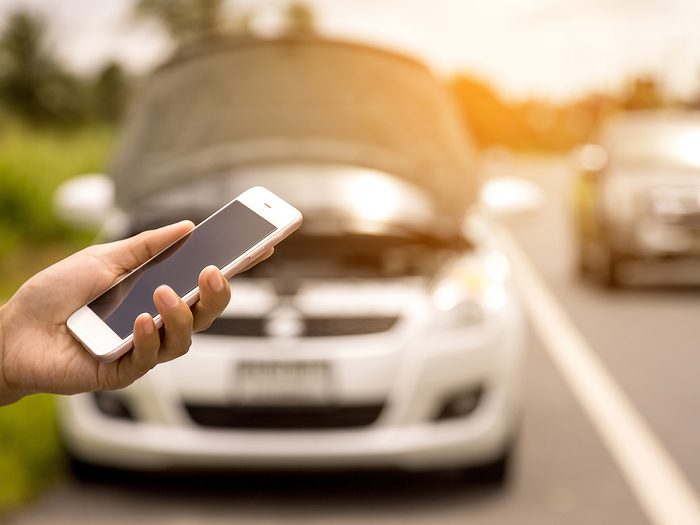
Keep a roadside emergency kit in your car
A few simple preparations, including an inexpensive emergency kit, will get you through most breakdowns and accidents. You’re already familiar with the standard kit you hear about, which includes a blanket, protein bars, a candle and all that other stuff. That kit is a good idea. But there are a few additional accessories you should stock in every vehicle you own, along with this guide. By the way, seriously consider joining a roadside assistance plan. Even seasoned mechanics aren’t too proud to belong to one. One tow or a jump start on a freezing day and the annual fee will pay for itself.
Your customized roadside emergency kit should include:
- Your car’s owner’s manual. If you don’t have one, get one from your dealer. It’ll show you how to change a tire, explain what all the warning lights mean, list part numbers for lightbulbs, and provide the fluid types and capacities so you can refill with the right stuff.
- An LED flameless flare lasts much longer than an ordinary flaming road flare. Attach the magnetic base to your car and set it to flashing mode to warn other drivers.
- Spiral notebook and mechanical pencil (writes in any position or weather and needs no sharpening). Use to record accident information, police report numbers, phone numbers, etc.
- A car charger for your phone.
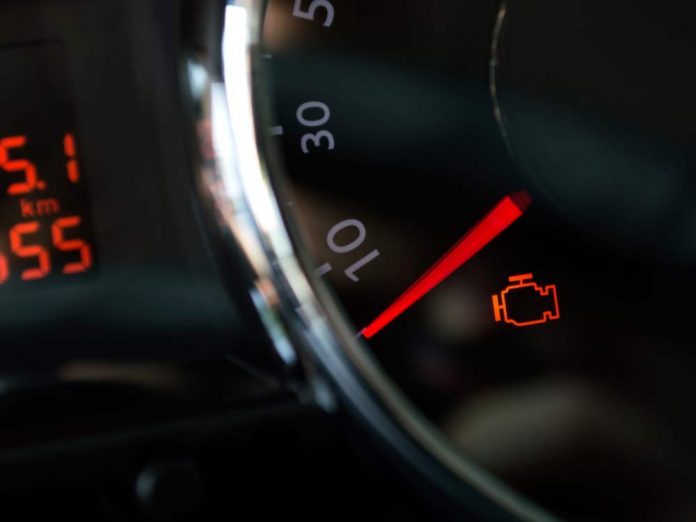
Decode your vehicle’s warning lights
As a car owner and driver, it’s up to you to know your different dashboard lights—and what they mean in a potential emergency situation. Here are just a few examples:
- Oil. The engine has low oil pressure. Check the oil level and add oil if you have some with you. Otherwise, have the vehicle towed to a repair shop. Driving a vehicle with low oil pressure can cause catastrophic engine damage.
- Brake light. Check the operation of the brake pedal. If it feels spongy or goes to the floor, stop driving and have the vehicle towed to a service facility. If the pedal feels firm and the brakes stop the vehicle, check the brake fluid level in the reservoir. If it’s low, add more brake fluid. If the light stays on after you’ve added fluid but the pedal is still firm, have the vehicle serviced as soon as possible. (Here are more reasons your brake light is on.)
- Airbag/SRS. The airbags have shut down and will not work if you get into an accident. Get the vehicle serviced soon.
- Traction control/stability control. There’s a problem with the system. You can still drive the vehicle, but exercise extra caution on slippery roads and in turns. Have the system serviced soon.
- “Check engine.“ If the engine’s running smoothly and the transmission is shifting properly, you can continue to drive the car until you can get it checked by a mechanic. If it’s flashing, pull over at the nearest safe spot. Have the vehicle towed to a repair shop immediately. Driving with a flashing “check engine” light can destroy expensive emissions components.
- Charging system. There’s a major failure with the charging system. Drive immediately to the nearest repair shop.
- ABS. There’s a fault in the anti-lock brake system. You can drive the vehicle and operate the brakes. But exercise more caution on slippery roads. Get the problem checked out soon.
- High temperature. Pull over at the nearest safe spot and turn off the engine. DO NOT open the radiator or the coolant reservoir. Have the vehicle immediately towed to a repair shop. Driving an overheated vehicle can cause serious engine damage costing thousands of dollars to repair.
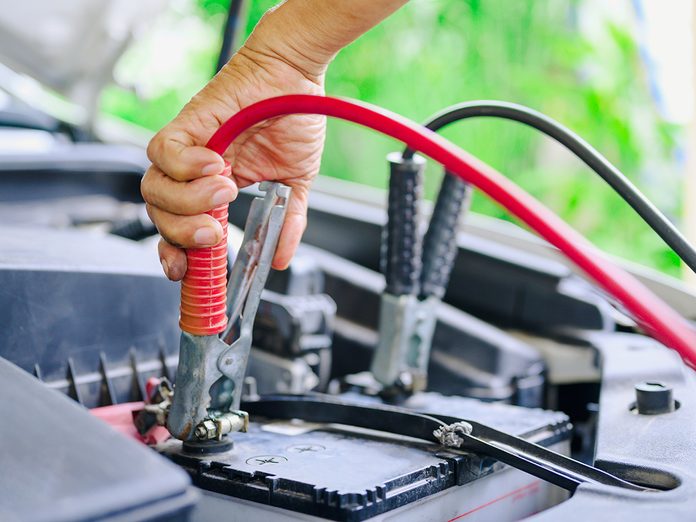
Jump-start a dead battery
Do you know how to jump start a car safely? It’s a part of car maintenance you should practice before you need it:
Turn off the ignition and all electrical accessories in both vehicles.
Connect the positive jumper clamp (marked “+” or coloured red) to the remote terminals on the good vehicle. They’re located away from the battery. If you cannot find the remote terminals, connect the positive (“+”) jumper clamp to the positive (“+”) battery terminals. Then do the same on the dead vehicle.
Connect the negative jumper clamp (marked “-” or coloured black) to the remote negative terminal on the dead vehicle. Then connect the clamp to the good vehicle. If the vehicles don’t have remote terminals, connect the negative jumper clamp to an unpainted metal surface at least 40 centimetres (16 inches) away from the battery.
Start the good vehicle and let it charge up the dead battery for at least five minutes. Then try to start the dead vehicle with the cables still in place. If it doesn’t start, call for service.
CAUTION! Connecting the jumper cables in the wrong order or attaching the spring clamps in the wrong location can damage expensive electrical components and even cause an explosion. Your owner’s manual leads you through the procedure step by step. Follow it to the letter! If you don’t understand the procedure, call a tow truck. Automotive batteries can vent explosive hydrogen gas when they are discharged. Do not smoke when jump-starting, and don’t use jumper cables with cracked or missing insulation.
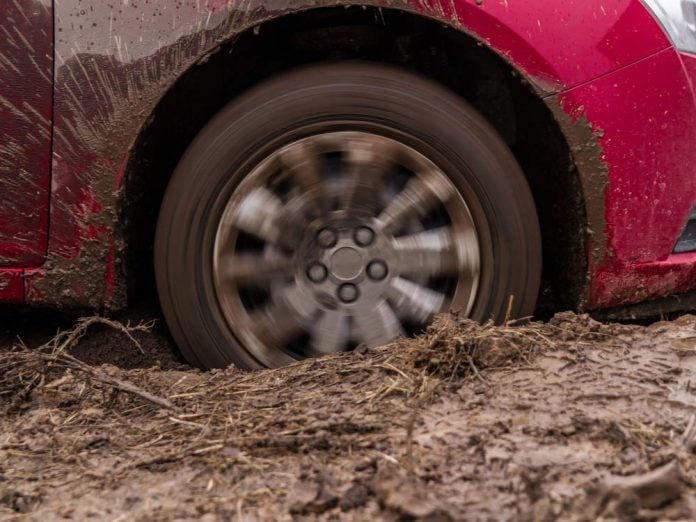
How to get your vehicle unstuck
Snowy or rainy conditions can leave you struggling to move your car with no traction. Here’s how to get unstuck:
- Keep the wheels as straight as possible and avoid spinning the tires—this just digs the car in deeper.
- Place the gearshift in “1” or “low.” Press the accelerator and allow the spinning wheels to move the vehicle forward a bit (very slowly). Then release the gas and let the vehicle roll backward. Immediately apply the gas to roll forward again. Continue this procedure to build enough momentum to rock your vehicle out of the rut.
- Do NOT shift the transmission back and forth between “D” and “R.” That can destroy your transmission and result in a hefty repair bill. If you cannot rock the vehicle out using the procedure above, call a towing service—it’s cheaper than a new transmission.
Follow these 10 tips for driving in the rain.
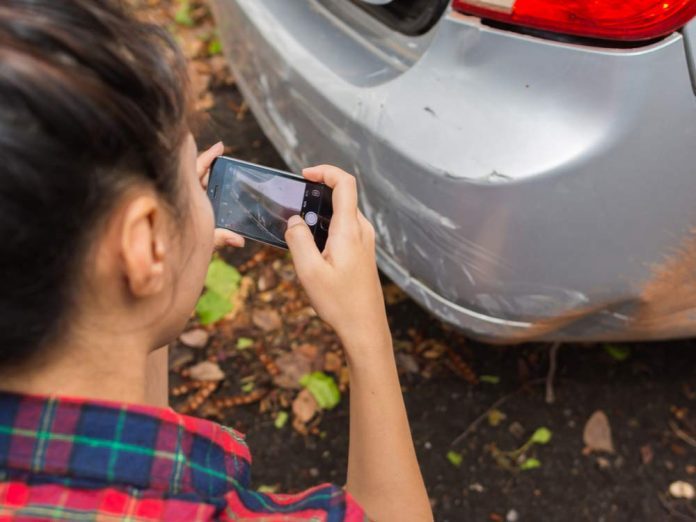
Get all the information after an auto collision
In the event of a collision, you need to stay calm and and collected.
- Get the other driver’s licence number, insurance company name and policy number, the vehicle’s licence plate number and its vehicle identification number (VIN), located in the lower corner of the windshield.
- Check for injuries. If anyone is injured, call 911 immediately. Do not move injured occupants unless you see fire, suspect the risk of fire, or are instructed to do so by 911 operators.
- Find out your location. Note the street address, highway marker, destination sign or nearest billboard. Emergency personnel and your insurance company need this information.
- Note the weather conditions, skid marks and the damage to the other vehicle. Sketch the accident scene and take photos of damage to both cars.
- Locate any witnesses and get their account of the accident and their name, address and phone numbers.
- Don’t admit to any fault.
- Get a copy of the police report or find out how to obtain a copy.
- Don’t make any “deals” to pay out-of-pocket in order to avoid notifying your auto insurance company. Your policy requires you to report the accident even if you choose not to file a claim.
- Contact a towing service to move your vehicle to a repair shop, and make arrangements to get home.
- Call your insurance company to report the accident and file a claim. Don’t forget to report to the nearest collision centre as necessary.
Here are more driving tips for beginners that you’ve probably forgotten since driver’s ed.
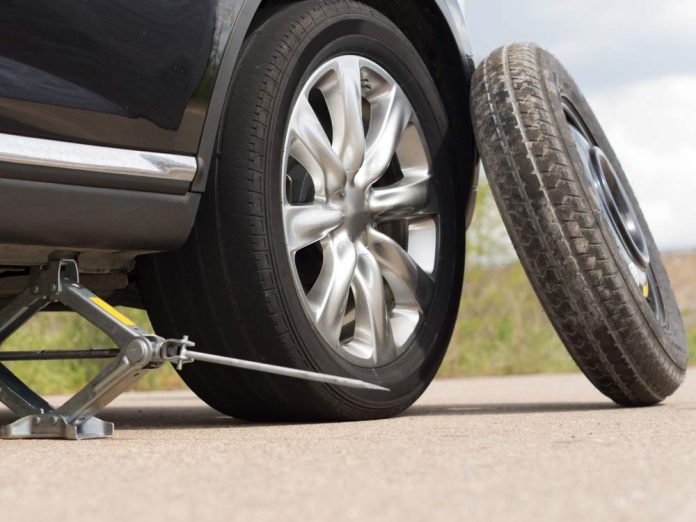
How to change a car tire
Changing a flat tire is not difficult (you’ll find all the instructions on a decal near the jack and in the owner’s manual), but make sure you’re well off the road and protected from traffic.
Break the lug nuts loose before you jack up the vehicle. Once the spare is in place, spin on the lug nuts and tighten them partially. Then lower the vehicle and perform a final tightening. Drive to the nearest service station and check the air pressure in the spare (it’s often low).
In some situations, you should not change your own tire. If you have a flat tire on a highway or narrow residential street and the flat tire is on the driver’s side of the vehicle, call for roadside assistance. Even if you pull off onto a paved shoulder, the risk of being struck by another vehicle is extremely high—especially at night.
If the highway has a narrow or unpaved shoulder and there’s a nearby exit, you can drive the vehicle to the exit and call for help once you’re off the main road. Turn on your hazard flashers and drive slowly. Be warned that you will most likely destroy the tire and possibly the wheel by driving to the exit. But that’s smarter than changing a flat tire on a busy street shoulder.
Next, find out how long you can drive on a spare tire.